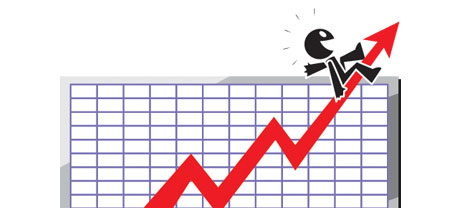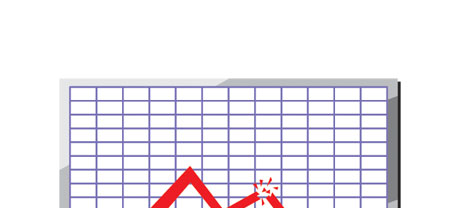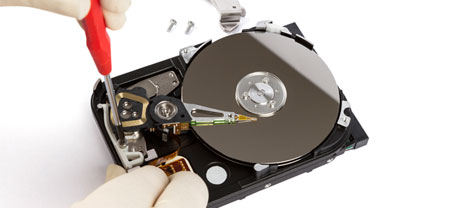For years there seemed to be only one reputable method to store data on a pc – working with a hard disk drive (HDD). However, this kind of technology is presently demonstrating its age – hard drives are really noisy and slow; they’re power–ravenous and tend to generate a lot of heat throughout intensive operations.
SSD drives, however, are really fast, take in significantly less energy and are generally much cooler. They provide an exciting new way of file accessibility and storage and are years in front of HDDs with regard to file read/write speed, I/O efficiency and also power capability. Discover how HDDs stand up up against the modern SSD drives.
1. Access Time
A result of a revolutionary new method to disk drive performance, SSD drives allow for considerably quicker file access speeds. Having an SSD, file accessibility instances are much lower (as little as 0.1 millisecond).
HDD drives depend on rotating disks for files storage purposes. When a file will be used, you will have to wait for the right disk to get to the right position for the laser to access the data file involved. This leads to an average access rate of 5 to 8 milliseconds.
2. Random I/O Performance
As a result of the brand–new radical data storage technique embraced by SSDs, they supply faster data access speeds and swifter random I/O performance.
Throughout TechnoMomma’s trials, all of the SSDs demonstrated their ability to take care of at the least 6000 IO’s per second.
With an HDD drive, the I/O performance steadily increases the more you use the hard drive. Even so, just after it actually reaches a certain limitation, it can’t get swifter. And because of the now–old concept, that I/O limitation is much less than what you might have with an SSD.
HDD are only able to go as much as 400 IO’s per second.
3. Reliability
SSD drives are created to include as less moving elements as possible. They utilize an identical technology like the one found in flash drives and are generally much more reliable when compared with traditional HDD drives.
SSDs come with an common failure rate of 0.5%.
HDD drives make use of rotating hard disks for storing and browsing files – a technology going back to the 1950s. Along with hard disks magnetically suspended in the air, spinning at 7200 rpm, the prospects of something going wrong are considerably bigger.
The normal rate of failing of HDD drives ranges between 2% and 5%.
4. Energy Conservation
SSD drives are much smaller compared to HDD drives as well as they don’t have any kind of moving components whatsoever. It means that they don’t produce so much heat and need considerably less electricity to work and less power for cooling reasons.
SSDs use up somewhere between 2 and 5 watts.
From the minute they have been designed, HDDs have always been quite electric power–hungry systems. Then when you’ve got a web server with a bunch of HDD drives, this can increase the regular monthly power bill.
Typically, HDDs take in somewhere between 6 and 15 watts.
5. CPU Power
SSD drives permit faster file accessibility speeds, which generally, subsequently, enable the processor to perform file queries faster and after that to return to additional duties.
The average I/O wait for SSD drives is just 1%.
When using an HDD, you will need to spend extra time waiting for the results of one’s data file call. This means that the CPU will remain idle for further time, waiting around for the HDD to respond.
The regular I/O delay for HDD drives is approximately 7%.
6.Input/Output Request Times
In real life, SSDs perform as admirably as they performed for the duration of the trials. We competed a complete platform back up using one of our production servers. Through the backup procedure, the standard service time for any I/O queries was in fact below 20 ms.
With the exact same web server, but this time furnished with HDDs, the effects were totally different. The regular service time for any I/O query changed in between 400 and 500 ms.
7. Backup Rates
Another real–life advancement is the speed at which the data backup was produced. With SSDs, a server back up currently requires less than 6 hours implementing our server–designed software.
We implemented HDDs exclusively for several years and we have now pretty good understanding of how an HDD works. Generating a backup for a web server furnished with HDD drives can take about 20 to 24 hours.
With TechnoMomma, you can get SSD–equipped hosting solutions at inexpensive price points. The cloud web hosting plans and then our VPS web hosting contain SSD drives automatically. Apply for an hosting account along with us and witness the way your sites can become far better automatically.
Hepsia
- Live Demo
Service guarantees
- TechnoMomma’s Virtual Private Servers provide no installation costs and work in a steady network offering 99.9% of uptime. Full root/administrator access warranted.
Compare our prices
- Examine the tools and characteristics offered by TechnoMomma’s Virtual Private Servers. You could start with a cheaper VPS Web Hosting configuration and upgrade with a click as your necessities increase.
- Compare our hosting plans
Contact Us
- You’ll be able to get in touch with us 7 days a week by email or by utilizing our extra–fast ticketing platform. Our company offers a 1–hour response time frame guarantee.














